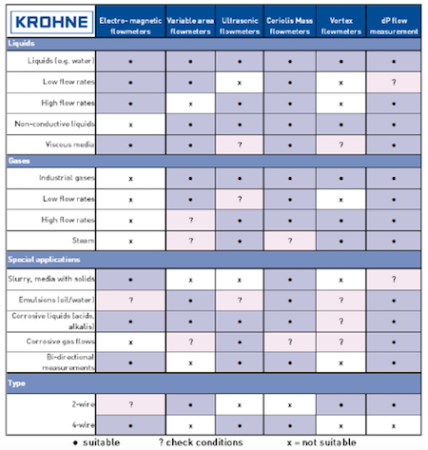
Flow meters play a pivotal role in many applications, but some may underperform if they’re not the best match for a process.
Making assumptions about a flow meter going into an oil or gas application can lead to an expensive mistake, especially in high-pressure situations. While a variety of factors impact meter performance, the most common culprits are flawed sizing and failing to choose the most appropriate technology.
By more closely accounting for these and other variables — and not going into the evaluation fixed on a specific meter technology — operators can ensure their future flow meter acquisitions are better suited for the job.
Pay Close Attention to Sizing
Sizing is an issue because meters tend to be designed to potential maximum flows instead of actual operating flow rates. Is a meter the proper size for the flow rate, pressure, and temperature at which it will typically be operating? Because gas is compressible, for example, sizing a meter for maximum design pressure will provide a flow rate in standardized volumes that appears much different than it would be at normal operating pressure. In that case, selecting a flow meter to handle 2,000 psi based on the pipeline design, even though it will really operate at 500 psi, will result in a meter that is substantially oversized for the application.
To download a copy of this handbook to access more articles, click here.
To mitigate these types of sizing issues, ask the vendor for a sizing report or for software to perform the sizing. Plug all the flow variables — fluid type, flow rate, pressure, temperature, viscosity, compressibility, and density — into the software. It will provide recommended technologies as well as an estimate of the devices’ performance to help select the most suitable meter.
Sizing software can only go so far, as another common issue is not selecting the technology that’s the optimal fit for an application.
For example, if there are corrosion inhibitors in a fluid, it would be inappropriate to use an electromagnetic meter since the additive may be inadvertently coating the sensor electrodes and thereby affecting the sensitivity of the device to flow changes. Account for any special considerations, such as the potential explosiveness or corrosiveness of what’s being measured. Additionally, are there any electrical or hazardous materials approvals required for the technology to fit in an installation? Asking these types of questions will help you to determine material compatibility and narrow down the most appropriate options.
The table below may provide general guidance on technologies suited for certain applications.

Other Variables To Watch
While proper sizing and choice of meter based on materials is critical, there are other fundamentals to consider when evaluating flow meters. These include:
• Be clear on what is required when it comes to accuracy, repeatability and pressure drops at nominal operating conditions. A greater pressure drop might be acceptable in some settings, but not in others. Most manufacturers’ sizing software will provide several meter options that span a range of accuracy and pressure drops;
• Have a clear understanding of what’s being measured and its overall state. While this seems straightforward, there can be confusion in some instances (i.e., might a liquid flash or a gas condense?). This may impact where and how you choose to install the meter, so consult the manufacturer if these types of conditions apply;
• Mechanically, what kind of flanges or end connections will be needed to mount the instrument? If the new flow meter is replacing an existing meter, understand the dimensions of what’s being replaced. For example, what will be required to adapt a new meter selected as a replacement for a mechanical device with a narrow facing;
• Determine if there are other requirements for a flow meter to operate within specifications in your setting, such as minimum upstream and downstream straight-pipe runs. Will space limitations impact flow meter performance? If so, is there a way around it? In some cases, additional hardware such as flow straighteners, or perhaps special factory calibration setups can be considered to account for these constraints; and
• Have a clear understanding of the power requirements, environmental conditions and how the meter will connect to other devices. A meter tied into a control system might elicit a different set of recommendations from a vendor than one that will be operating independently or remotely connected to a SCADA system.
Finding an optimal flow meter solution depends on knowing as much as possible about the application. By asking the right questions and taking these variables into consideration you are more likely to find the best device for the application.
Print this page